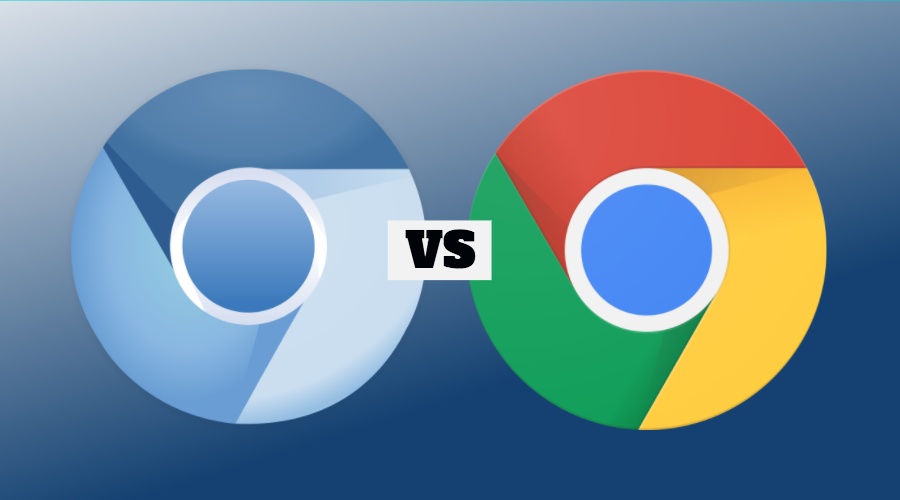When it comes to web browsing, Google Chrome and Chromium are two of the most popular choices. However, many users are unsure if they should use the well-established Google Chrome or explore the open-source Chromium browser. Both browsers are similar in many ways, but key differences between them may influence your decision on which to use. In this article, we’ll discuss the pros and cons of using Chromium over Google Chrome to help you make an informed choice.
What is Chromium?
Chromium is the open-source project on which Google Chrome is based. It’s essentially the barebones version of the browser, minus proprietary features like automatic updates, built-in Flash support, and integrated Google services. Since it’s open-source, Chromium is often used by developers and privacy-conscious users who want a browser to tweak and modify to suit their needs.

The Pros of Using Chromium Over Google Chrome
1. Open-Source and Customizable
One of Chromium’s main advantages is that it’s open-source, which means anyone can access, modify, and distribute the code. This makes it an excellent choice for developers as it shows the flexibility to customize the browser according to personal or project-specific needs. If you like to tinker with your software and ensure it’s tailored to your preferences, Chromium provides more control than Google Chrome.
2. No Google Tracking
Unlike Google Chrome, which is tightly integrated with Google’s services and collects data for analytics, Chromium doesn’t have the exact built-in tracking mechanisms. Chromium’s privacy features are more robust, giving users better control over their privacy. For users concerned about Google tracking their browsing activities or using their data for targeted ads, Chromium can be a more attractive alternative.
3. Faster and Lighter
Chromium tends to be faster and lighter than Google Chrome because it lacks many additional features and bloatware that come with Chrome, such as automatic updates and proprietary Google services. This means Chromium often uses fewer system resources, resulting in a smoother and faster browsing experience. Chromium can be a good option if you’re working on a machine with lower specs or want to free up some system resources.
4. Better Control Over Updates
Google Chrome automatically updates itself, sometimes without notifying the user, which can be inconvenient. On the other hand, Chromium does not have this feature, which gives users complete control over when and how they update the browser. This can be advantageous if you want to avoid automatic updates that might disrupt your workflow or introduce bugs.
5. No Built-in Ads or Unnecessary Features
Chromium does not have built-in features like Google’s marketing tools or other bloatware, which often accompany Chrome. This means users get a more streamlined experience without unnecessary pop-ups or ads, and the browser doesn’t have integrations with Google services like Gmail or YouTube. If you prefer minimalism or want a cleaner browser experience, Chromium is a better choice.
The Cons of Using Chromium Over Google Chrome
1. Lack of Built-in Features
One of the most significant drawbacks of Chromium is that it lacks several key features in Google Chrome, such as Google Sync, which allows you to sync your bookmarks, history, passwords, and extensions across different devices. Without this feature, you’ll have to rely on third-party tools or manually manage your data. This lack of integration could be inconvenient if you’re used to Google Chrome’s ecosystem.
2. No Automatic Updates
While the lack of automatic updates can be a pro for some, it is also a downside for others. Google Chrome automatically updates itself in the background, ensuring that users always use the most up-to-date version with the latest security patches. With Chromium, you have to manually update the browser, which might result in users missing important updates that could improve security or performance.
3. Limited Support for Flash
Chromium does not have built-in support for Flash, which was discontinued in 2020 but is still required for specific legacy sites. If you need Flash support, Google Chrome is a better option as it includes Flash and will handle it for you. Chromium users may need to install additional plugins or rely on third-party solutions for Flash support.
4. Potential Compatibility Issues
Some websites and extensions may be designed with Google Chrome in mind and may not work as seamlessly on Chromium. This can result in compatibility issues with specific sites or web apps, making Google Chrome more reliable for everyday users. While Chromium is very similar to Chrome, the lack of certain proprietary Google features could result in some minor glitches or issues.
5. No Built-in Google Services
Google Chrome is the more convenient browser if you’re deeply integrated into the Google ecosystem (e.g., using services like Gmail, Google Drive, or Google Docs). Chromium lacks these built-in services, so if you’re looking for easy access to Google’s tools, Chrome would be a better option. While you can still access Google services using Chromium, the experience may not be as seamless as with Google Chrome.
Chromium and Google Chrome: Which One is Right for You?
Chromium and Google Chrome have advantages and disadvantages, depending on your needs. If you prioritize privacy, speed, and a lightweight experience, Chromium might be the better choice. On the other hand, if you want a browser that seamlessly integrates with Google services, shows regular updates, and has a rich set of features, Google Chrome may be more suitable.
Conclusion
Ultimately, choosing Chromium over Google Chrome depends on your preferences and needs. If you’re a developer or someone who values privacy and control over your browser, Chromium is an excellent choice. However, if you’re looking for a browser with built-in features, Google Sync, and more extensive compatibility with web apps, Google Chrome remains the more practical choice for most users. Both browsers deliver fast, secure, and reliable browsing experiences, but choosing between them depends on how much you value customization and privacy versus convenience and integration with Google’s ecosystem.
Frequently Asked Questions (FAQs)
1. What is the difference between Chromium and Google Chrome?
The main difference is that Chromium is open-source and does not include proprietary features like Google Sync or Flash support. In contrast, Google Chrome is a fully packaged browser that includes Google’s services and automatic updates.
2. Is Chromium faster than Google Chrome?
Chromium is generally lighter and faster than Google Chrome because it lacks extra features and services, making it more resource-efficient.
3. Does Chromium present the same security features as Google Chrome?
Chromium shows similar security features to Google Chrome but lacks automatic updates, which could expose you to vulnerabilities if you don’t update it manually.
4. Can I use Google services with Chromium?
You can still use Google services like Gmail and YouTube with Chromium, but they are not as seamlessly integrated as in Google Chrome.
5. Is Chromium a good choice for developers?
Yes, Chromium is an excellent choice for developers because it’s open-source and customizable, allowing more flexibility in browser behavior.
6. Is Chromium safer than Google Chrome?
Google Chrome is slightly safer due to automatic updates, while Chromium lacks this feature and requires manual updates for security.
7. Can I install extensions on Chromium?
Yes, most Google Chrome extensions work with Chromium, but some that rely on Google services may not function properly.
8. Does Chromium use more RAM than Google Chrome?
No, Chromium is lighter and uses less RAM than Google Chrome, which includes extra features.
9. Can I sync my bookmarks and settings across devices in Chromium?
No, Chromium lacks the built-in syncing feature available in Google Chrome. You’ll need third-party tools for syncing.
10. Does Chromium support all web standards like Google Chrome?
Yes, Chromium supports the same core web standards as Chrome but may lack certain proprietary features, such as Google integrations.
